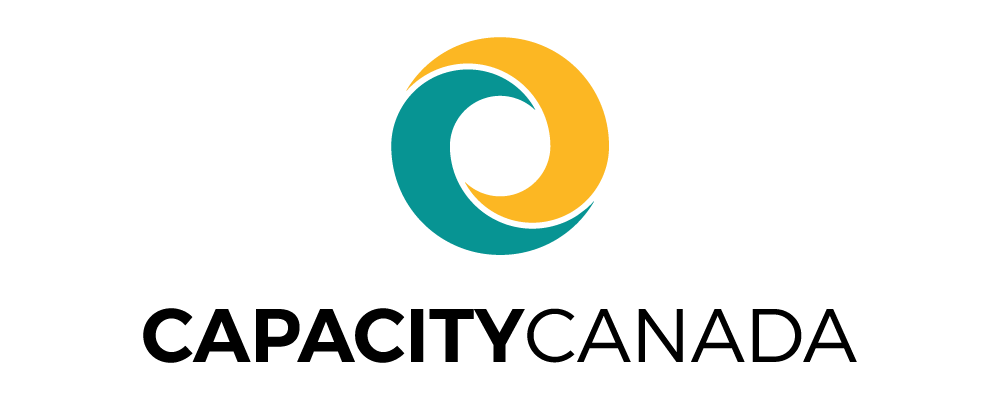Capacity Canada is embarking on a journey of creative problem solving and is looking for a few non-profit partners to come along on the trip.
The cost of a ‘ticket’ is commitment to a new initiative called Capacity by Design that aims to solve complex problems using the concept of design thinking. Design thinking is a human-centred approach to creative problem-solving.
Capacity by Design ramps up in September when Capacity Canada, in partnership with Kitchener-based design thinking consulting firm Overlap Associates, begins holding a series of design sprints for local and national non-profits to help them problem solve.
“The ultimate goal is to build a culture of design thinking within Canadian non-profits,” said Matthew Reynolds, who is spearheading the project for Capacity Canada. “Unlike, for example, traditional brainstorming, design thinking recognizes the value of other aspects in the problem exploration journey, like building empathy for understanding of the stakeholders in a system.”
He said the framework for design thinking isn’t new but does allow practitioners to improve the odds of creating better solutions to non-trivial problems.
To kick off the initiative, Reynolds, along with Overlap’s Ryan Voisin, manager of Innovation Programs and his colleague Kay Nadalin, an Overlap designer, hosted a ‘lunch and learn’ event at Capacity Canada’s Waterloo office June 15 to introduce the local non-profit community to the program.
Twenty-five participants, representing a cross-section of local non-profit organizations, attended to receive an introduction to Capacity by Design which has been in development for the past few months.
In March of this year, the project received a major boost of $417,940 from the Lyle S. Hallman Foundation to cover the first-year costs of the program. The foundation has committed a total of $1.1 million over four years.
The funding will see Overlap Associates, a leader in design thinking, spend the next year working onsite at Capacity Canada to train its talented faculty members to become experts on the subject. In turn, they will use this training to share their knowledge through Capacity by Design in several phases, which includes six design sprints, starting in September.
Reynolds said the sprints, to be held once a month, will last five days. Five will be offered to non-profits in Waterloo Region, with the sixth being offered to a non-profit outside the region.
“A lot of tech companies do design sprints every week,” said Reynolds to the participants, adding the final phase of Capacity by Design is mentorship after the sprint is completed.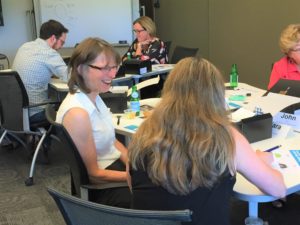
“The biggest thing we want is to increase the capacity of the organization to think differently about how they approach problem solving,” he said, adding Capacity by Design will give the non-profits a set of new ‘tools’ in their toolboxes.
To provide those attendance with a taste of the design thinking process, Voisin outlined the steps that it often entails. These include: defining the problem; researching the problem, which includes a deep understanding of the needs of those affected; ideate to devise possible solutions; prototype development; and prototype testing using feedback from those affected by the problem.
“We take those ideas and make them tangible. We build something,” he said, noting sometimes the solution doesn’t always work and additional solutions are needed. “Ideation is a numbers game. The way you get to truly new ideas is that you collect a thousand ideas and you pick out the best ones.”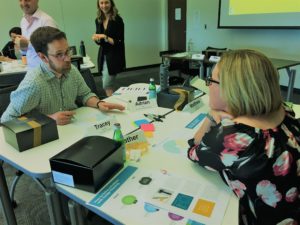
However, Voisin said in the beginning Capacity by Design will gradually build toward providing non-profits with viable solutions to their problems.
“By the end of the first year we’re not looking for a solution but a really good understanding of the problem,” he said.
Reynolds said Capacity Canada is looking for a variety of non-profits to take part in the initial phase of the program, groups that have the capacity to make changes.
“We understand that not every design sprint is going to come up with a solution, but we need them to take that knowledge and run with it,” he said.
Lyles S. Hallman Foundation Executive Director Laura Manning, who attended the lunch and learn, said when it comes to design thinking, support is needed on all sides to make it work correctly.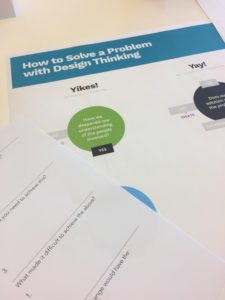
“We fund a number of organizations to do design projects and two of the things I’ve seen come out as really important are a willingness on behalf of an organization, and particularly its board and who ever the funder is, to explicitly give permission to spend the time doing this; that this is OK, that you’re not neglecting your main focus in service. That this actually will, at some point, bring you closer to doing that service better,” she said. “But that needs to be laid out completely and clearly and the board has to buy into the process.”
Voisin said design thinking is a great concept for socially-minded organizations looking for ways to change existing situations into preferred ones.
“Design thinking is a proven methodology to support these organizations create that change more effectively,” he said.
Reynolds agreed and said Capacity by Design will benefit non-profits since they are often asked to do a great deal with very little resources.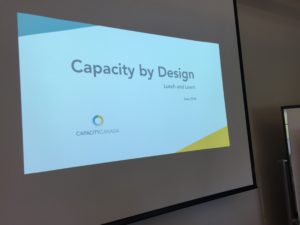
“Having time to make non-trivial changes to services or programs, to pause and do research, or develop and test prototypes is rare. Using what resources are available in a more efficient and insightful way, designed to mitigate risk, is one of the goals of design thinking and certainly our hope for the Capacity by Design program,” he said.
“At this point, we’re looking for partners who are willing to go on this learning year journey and give us as much feedback as possible.”
For more information about Capacity by Design, please contact Matthew Reynolds ([email protected]) or Lynn Randall ([email protected]). Interested parties are also invited to follow @capacitycanada on Twitter, and to watch capacitybydesign.ca for developments.
